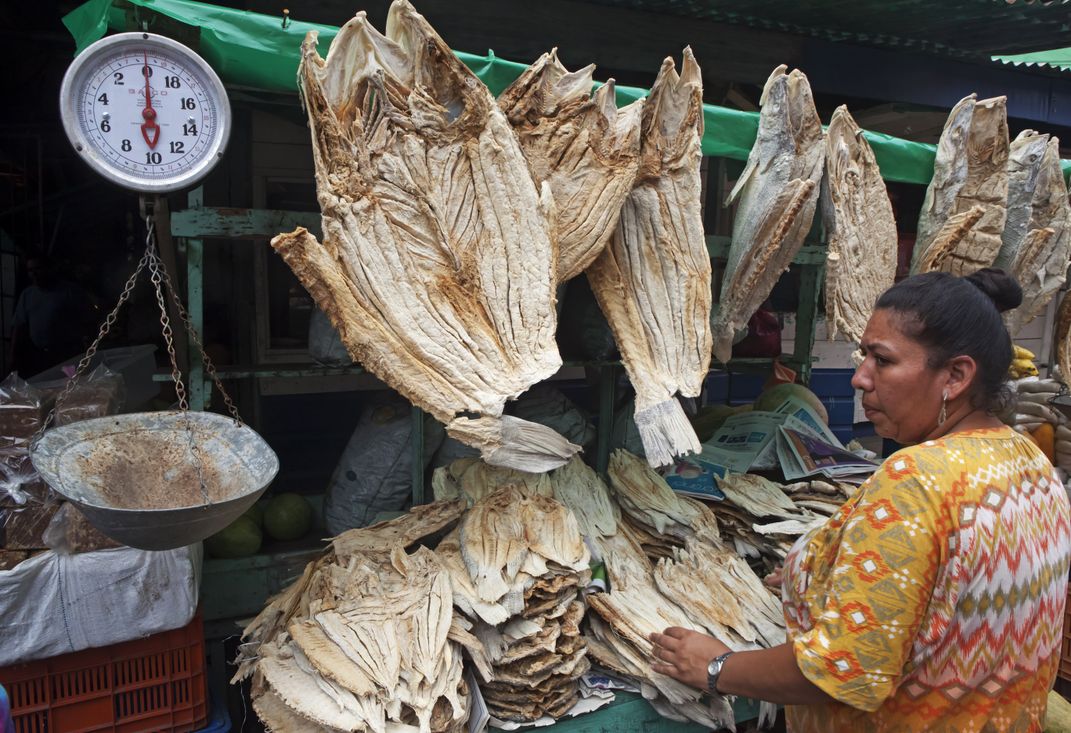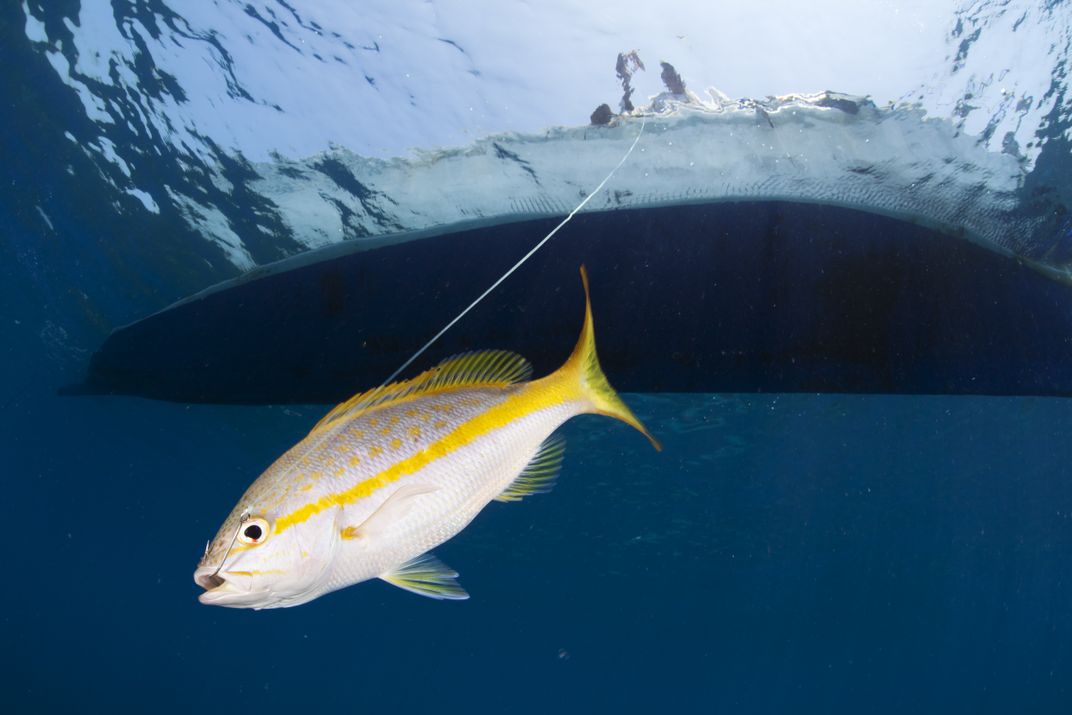NATIONAL MUSEUM OF NATURAL HISTORY
Can Genetics Improve Fisheries Management?
The Smithsonian’s Marine Conservation Program uses genetics as one tool in a holistic approach to marine conservation. In doing so, the Program provides fisheries managers with sound scientific data that can be used for evidence based decision-making and adaptive management.
/https://tf-cmsv2-smithsonianmag-media.s3.amazonaws.com/blogging/featured/Fish_Banner_Image.jpg)
The Marine Conservation Program, based at the Smithsonian’s National Museum of Natural History, conducts applied research to solve challenges facing marine and coastal ecosystems and the communities that rely on them. We engage and partner with local communities, industries, non-government organizations and governments worldwide to support science-based management of marine resources. We focus strongly on genetic methodologies to resolve critical problems facing the marine environment. In particular, we use genetic techniques to study seafood traceability, fisheries management and the design of marine reserves (no-take zones) in Latin America and the Caribbean, with an emphasis on the Mesoamerican Reef Ecoregion—a resource shared by Mexico, Belize, Guatemala and Honduras.
Seafood Traceability
Do you know what you are eating or where it came from? Both retailers and consumers want to be assured of what seafood they are buying and that it comes from healthy fish populations. So, we conducted a study in the Wider-Caribbean to identify if there was mislabeling of seafood products in the market place, primarily restaurants. To identify the species being sold by retailers we used genetic barcoding: a process by which DNA is extracted from the tissue of each sample and, after a series of steps in the laboratory, the sample DNA is sequenced to produce a pattern similar to a barcode. The pattern is then compared to a library of known species and then, in our case, determined if the fish sample in question is what it was sold as. The study, led by Dr. Courtney Cox, brought up some surprising results. A species of catfish farmed in South East Asia was identified as being sold as grouper or snapper and, in a few cases, endangered and protected species were identified. The role of genetic barcoding in fisheries management is obvious based on these results.

Fisheries Management
Using genetics to identify which species are being taken from the oceans is also important for fisheries management. Dr. Iris Segura-García used genetic barcoding to identify species in small-scale fisheries in Myanmar, South East Asia—the first of its kind in that region. The results of the study revealed that a huge range of species are being caught and making their way into local markets—an important step that will form the foundation for future studies aimed at improving fisheries management.
Research led by Dr. Nathan Truelove in collaboration with the Dr. Stephen Palumbi Lab at Stanford University’s Hopkins Marine Station, also applied cutting edge techniques to fisheries management by creating numerous genetic markers. These markers consist of genetic sequences which detect differences between individuals of the same species. In this case, the markers were used to determine the origin of an individual. In particular, the research focused on the queen conch—an important fishery throughout the Caribbean. The high demand for this species in the United States has triggered overexploitation and the collapse of the fishery in some countries. Where this has occurred, export bans of queen conch have been implemented by CITES (the Convention on International Trade in Endangered Species of Wild Fauna and Flora). With a lucrative market available, there is potential for conch from some banned countries to make their way into the United States. However, with the genetic tools currently being developed it may be able to determine the origin of conch, which could help authorities enforce export bans).

Designing Marine Reserves
In addition to seafood traceability and fisheries management, genetics is important for designing no-take zones. Genetic analyses allow us to define populations. This is critical in understanding the spatial scale as different strategies are required to effectively manage one large population compared to multiple populations. Moreover, genetics provide us with information about the level of connectivity within and between populations. It is important that protected areas are connected with fishing grounds so that, in addition to the conservation of resources, fishers and coastal communities receive benefits.
Research led by Dr. Iliana Chollett modeled the biology of spiny lobsters and yellowtail snappers, which includes their planktonic larval stages, death rates and habitat requirements; oceanic currents, which affect the dispersal of larvae; the occurrence of different habitats including coral reefs, mangrove forests and seagrass beds; genetics; and economic requirements of fishers. The end result was the creation of multiple maps of marine reserve networks which serve as a first step in community designed marine reserves.
And, as the Program Coordinator for the Marine Conservation Program, I am employing similar genetic techniques to staghorn coral and red mangrove. These species provide critical habitat to both ecologically and economically important fish species. I hope to incorporate mangrove and coral population connectivity in future marine reserve designs by promoting both habitat and fisheries conservation within the Mesoamerican Reef Ecoregion. Combining the results of population genetic studies with habitat maps and fishing activity provides a comprehensive overview of the ecological, social and economic spheres of marine management.
Ultimately, the effective management of natural resources requires a comprehensive understanding of the biology of the animals and/or habitats to be managed and the dynamics of the people that rely on these resources. The Marine Conservation Program uses genetics as one tool in a holistic approach to marine conservation. In doing so, we provide fisheries managers with sound scientific data that can be used for evidence based decision-making and adaptive management.


